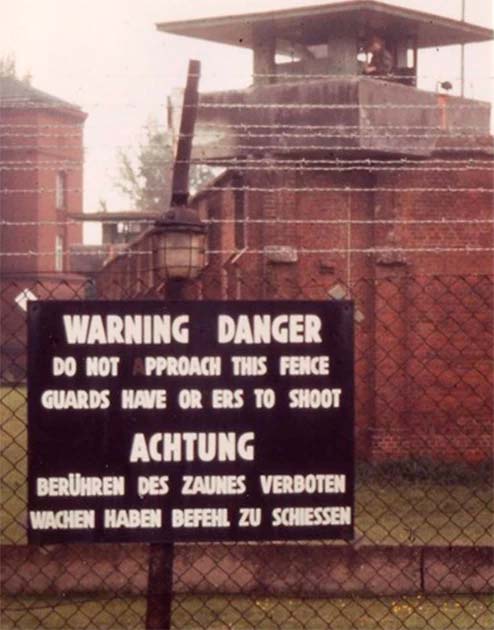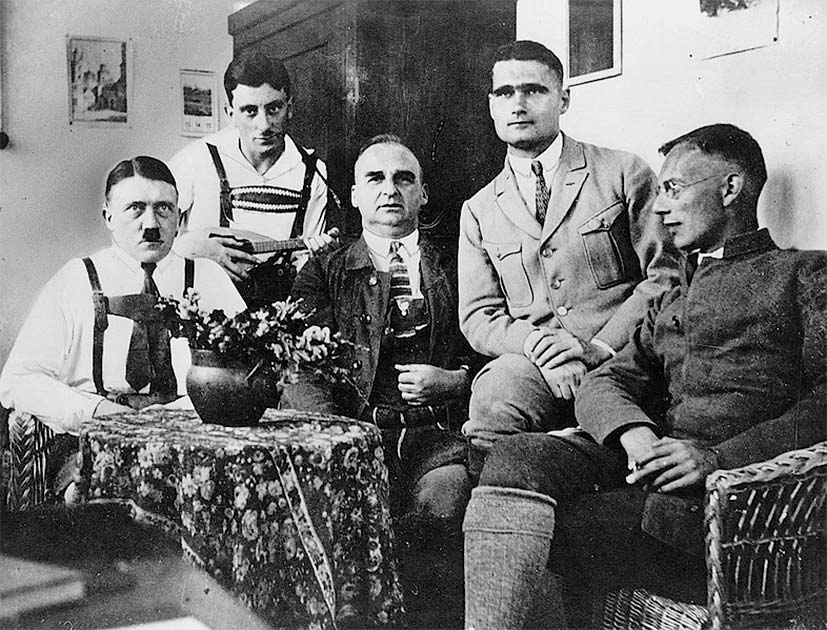Rudolf Hess was a prominent figure in the Nazi Party and one of Adolf Hitler’s closest confidants during the Fuhrer’s rise to power. He is perhaps best known for his failed solo mission to negotiate peace with Britain in 1941, which resulted in his capture and subsequent imprisonment for war crimes.
Despite spending over four decades behind bars, Hess remained a controversial and enigmatic figure, with rumors and conspiracy theories still circulating about his life and death to this day. In this article, we will explore the life and legacy of Rudolf Hess and try to unravel some of the mysteries surrounding this infamous Nazi leader.
The Death of Rudolf Hess
Hess died on 17 August 1987, at the age of 93 in Spandau Prison, Germany. By this point, Hess was the only prisoner at Spandau and a summer house had been set up in the prison garden for him to use as a reading room.
Hess’s lifeless body was found inside that reading room. He had hanged himself using a length of electrical cord strung over a window latch.
A short note addressed to his family was found in his pocket, it simply thanked them for all they had done for him. A month later, on September 17, the Four Powers (China, Russia, the UK, and the US) released their report: Hess had died by suicide.

His body was initially buried in a secret location to avoid media attention or attracting Nazis. Spandau Prison was closed and demolished shortly afterward.
Suicide or Conspiracy?
Obviously, the first question is why would Hess live for 47 years in prison before choosing to kill himself? Was Hess murdered? This really depends on who one asks.
A lot of people have spent a lot of time arguing that Hess was murdered. But the simple fact is, the more one looks at the evidence, the less likely it seems. There’s no plausible reason to suspect that anyone killed Hess.
If we put on our conspiracy theorist hats, there are some interesting theories out there (even if they don’t pass much scrutiny). Not long after Hess’s death his lawyer, Alfred Seidl, released a statement claiming Hess had not killed himself. He believed Hess had been too old and frail to tie a noose and then hang himself from it.
This sentiment was echoed by Abdallah Melaouhi, Hess’s medical orderly from 1982 to 1987, who also said that his former ward had been in no shape to kill himself. Melaouhi went as far as to write an entire book on the matter.
Hess was a frail 93-year-old who suffered from arthritis. People claimed that before his death he had been unable to tie his own shoelaces, let alone tie himself a noose.
But why would anyone want him a 93-year-old Nazi dead? Out of revenge? During the Nuremberg trials, Hess had avoided the death penalty. Having been arrested in 1941 meant he had been absent during some of Germany’s worst atrocities, and so he received a comparatively light sentence.
But Hess was still a Nazi through and through up until his dying day. There were plenty of people who were unhappy with the fact he had avoided the death penalty. Maybe one of them had him killed?
Hess’s son, Wolf Rudiger, had a different theory. He believed his father had been murdered by the British Secret Intelligence Service to stop him from revealing Allied war crimes from World War 2.
This theory has never really passed muster. First, the idea of a Nazi revealing Allied war crimes is a little ironic. Second, Hess was arrested in 1941, meaning he was in prison for much of the war. And third, Allied abuses such as Hiroshima, Nagasaki, the bombing of Dresden, and the bombing of Hamburg (to name just a few) were all pretty well documented.
What leverage could Hess have really had? And why did the Allies wait 40 years to get rid of him?
The final two theories are perhaps the least plausible. One states that the man at Spandau prison wasn’t actually Hess but his body double. For decades conspiracy theories have claimed to have found evidence that Hess escaped and let his body double take the fall.

None of these theories have ever been proven but still, some claim the Allies faked the old Nazi’s suicide so that no one would discover that Hess was really a double. However, if one thinks about it for two seconds this really makes no sense. By killing him more attention was brought to the body than if the 93 year old had been allowed to die of natural causes.
The final theory was that killing Hess was a financial decision. It’s been well documented over the years that keeping people in jail is very, very expensive.
Some believe the former Allied nations had Hess killed because they were sick of paying for his keep and couldn’t agree on who should foot the bill. This seems unlikely since at the age of 93 and being in ill health, Hess didn’t exactly have long left anyway.
Why Did Hess Do It?
So, if these conspiracy theories aren’t true, and Hess did kill himself, we’re left with two questions. Why? And why did he wait 47 years? Many conspiracy theorists have claimed if Hess really wanted to die, he would have done it much sooner.
Well, he did. Throughout his five decade prison stay, Hess suffered from severe bouts of depression and attempted suicide several times. The Historian Peter Rafield (who denies Hess killed himself) claims that the suicide note found in Hess’s pocket had actually been written in 1969 after Hess had been hospitalized (after a suicide attempt). His argument was basically Hess couldn’t have killed himself because his suicide note was from an old suicide.
In Hess’s latter years his health failed him his mental state only deteriorated. Living in constant pain and knowing that his time was coming anyway, it’s easy to imagine that the stubborn old Nazi decided to go out on his own terms.
The idea that he was too ill and frail to tie his own noose was also disproven. One of his doctors went on record to state that the arthritis in Hess’s hands wasn’t that bad. He often wrote letters and if his fingers were nimble enough to hold a pen, he could tie a knot.
An investigation led by the British government in 1989 declared that Hess’s death was not suspicious and there was no ground for further investigation. At the time of his death Hess had been the only inmate at Spandau prison and the chances of anyone getting to him were next to none.

The idea that he was murdered simply makes no sense. He was 93 years old and soon to die anyway, there seems no plausible reason to kill him and risk a conspiracy. He was an old man, in pain, who was disillusioned with the modern far right and who felt he had been left behind by history.
Rather than wait around and become a Nazi symbol of evil in death, it seems likely he chose to kill himself, attempting to paint himself as the idealistic and misguided figure that he saw himself. Conspiracy or not, after August 17, 1987, there was nothing more to say about Rudolf Hess.
Top Image: Rudolf Hess in 1945: was his death after 47 years in prison truly a suicide. Source: US Army Signal Corps / Public Domain.
By Robbie Mitchell